Role of a Product Survey in SaaS.
Role of a Product Survey in SaaS.
Role of a Product Survey in SaaS.
SaaS is all about creating products for specific use cases. This is where a product survey becomes all the more important to know the user deeply.
SaaS is all about creating products for specific use cases. This is where a product survey becomes all the more important to know the user deeply.
SaaS is all about creating products for specific use cases. This is where a product survey becomes all the more important to know the user deeply.
In the fast-moving world of Software as a Service (SaaS), user feedback for products is invaluable. This is why a product survey helps in product development, promotes innovation, and helps create solutions that align with your audience's needs. Amidst many opinions, from social media polls to vox pop videos, product surveys stand out as an important tool for collecting actionable insights. But do you know how to use a product survey effectively?

Product Survey Basics: Know Your Aim
A product survey is a structured questionnaire intended to collect quantitative and qualitative data about your users' experiences with your SaaS product. The survey explores user needs, aspirations, current problem-solving approaches, and potential challenges. Overall, it provides a clear perspective of what works for a user and what improvements are needed.
Isn’t It the Same as Product Feedback?
Many people often think that a product survey is unnecessary when there is already a product feedback form that they give to the users. So, product feedback is an unfiltered and spontaneous response from users that may not have been intentionally collected. It could be taken via a product feedback form, gauged from social media posts, checked from review sites, and more.

Product feedback provides insights but can be biased by individual or user segment experiences. Surveys, in contrast, are carefully designed and systematic. A product survey allows you to collect statistically significant data from a broader segment of your user base, ensuring a more precise and representative overview of the users.
When to Use a Product Survey
Here are some key scenarios where a product survey is useful:
Introducing a new feature: Before launching your new feature, use a product survey to know whether this feature is needed or not. If it is not broken, don’t change it.
Use case identification: Knowing why a customer is using your product is essential to narrowing that niche and directing energies toward it.

Assessing user satisfaction: A product survey can help you measure customers' overall sentiment toward your product and detect potential areas of dissatisfaction. It can also tell you whether and to what extent the expected outcomes are being delivered.
Guiding future development: A product survey can collect data on which features are most valuable to your users, inform your product roadmap, and ensure that your company or team focuses on the essential functionalities.
Understanding reasons for user churn: The churn rate is a major revenue killer in SaaS. A product survey on churn analysis is quite useful for grasping why users are leaving and identifying strategies to retain them before they churn.
Long Term Vision of a Product Survey
In short, actionable insights. A product survey is not merely about collecting more information but about providing clear next steps to improve the user experience. How?
Identify problem areas: A product survey helps you recognize the features users have difficulty with and informs specific improvements.
Confirm your feature ideas: When you have well-defined product survey questions, you can test user responses to new features before fully developing them and save time and resources.

Prioritize bug fixes: By directly contacting your users, you can understand which bugs cause the most disruption and prioritize their resolution via a product survey focused on bugs.
Track changes over time: By conducting product surveys from time to time, you get to monitor user sentiment over time to measure the effectiveness of previously implemented changes.
Time to Make a Perfect Product Survey
To create a product survey, define the information you seek. Then, describe your users and, if possible, have different surveys for different user segments. The user segment that you suspect has the most bugs might not be the one you want to give beta testing to a new feature because their immediate problem is bugs.
Know which question to put in the questionnaire and design a product survey based on the best practices we’ve described in our blog. Lastly, collect data that you can act on and do not use to merely create presentations on user experience in the past month and so on.
Act, act, and act! Turn the product survey results into action steps and get going to improve your SaaS product. Get started with WorkHack forms.
In the fast-moving world of Software as a Service (SaaS), user feedback for products is invaluable. This is why a product survey helps in product development, promotes innovation, and helps create solutions that align with your audience's needs. Amidst many opinions, from social media polls to vox pop videos, product surveys stand out as an important tool for collecting actionable insights. But do you know how to use a product survey effectively?

Product Survey Basics: Know Your Aim
A product survey is a structured questionnaire intended to collect quantitative and qualitative data about your users' experiences with your SaaS product. The survey explores user needs, aspirations, current problem-solving approaches, and potential challenges. Overall, it provides a clear perspective of what works for a user and what improvements are needed.
Isn’t It the Same as Product Feedback?
Many people often think that a product survey is unnecessary when there is already a product feedback form that they give to the users. So, product feedback is an unfiltered and spontaneous response from users that may not have been intentionally collected. It could be taken via a product feedback form, gauged from social media posts, checked from review sites, and more.

Product feedback provides insights but can be biased by individual or user segment experiences. Surveys, in contrast, are carefully designed and systematic. A product survey allows you to collect statistically significant data from a broader segment of your user base, ensuring a more precise and representative overview of the users.
When to Use a Product Survey
Here are some key scenarios where a product survey is useful:
Introducing a new feature: Before launching your new feature, use a product survey to know whether this feature is needed or not. If it is not broken, don’t change it.
Use case identification: Knowing why a customer is using your product is essential to narrowing that niche and directing energies toward it.

Assessing user satisfaction: A product survey can help you measure customers' overall sentiment toward your product and detect potential areas of dissatisfaction. It can also tell you whether and to what extent the expected outcomes are being delivered.
Guiding future development: A product survey can collect data on which features are most valuable to your users, inform your product roadmap, and ensure that your company or team focuses on the essential functionalities.
Understanding reasons for user churn: The churn rate is a major revenue killer in SaaS. A product survey on churn analysis is quite useful for grasping why users are leaving and identifying strategies to retain them before they churn.
Long Term Vision of a Product Survey
In short, actionable insights. A product survey is not merely about collecting more information but about providing clear next steps to improve the user experience. How?
Identify problem areas: A product survey helps you recognize the features users have difficulty with and informs specific improvements.
Confirm your feature ideas: When you have well-defined product survey questions, you can test user responses to new features before fully developing them and save time and resources.

Prioritize bug fixes: By directly contacting your users, you can understand which bugs cause the most disruption and prioritize their resolution via a product survey focused on bugs.
Track changes over time: By conducting product surveys from time to time, you get to monitor user sentiment over time to measure the effectiveness of previously implemented changes.
Time to Make a Perfect Product Survey
To create a product survey, define the information you seek. Then, describe your users and, if possible, have different surveys for different user segments. The user segment that you suspect has the most bugs might not be the one you want to give beta testing to a new feature because their immediate problem is bugs.
Know which question to put in the questionnaire and design a product survey based on the best practices we’ve described in our blog. Lastly, collect data that you can act on and do not use to merely create presentations on user experience in the past month and so on.
Act, act, and act! Turn the product survey results into action steps and get going to improve your SaaS product. Get started with WorkHack forms.
In the fast-moving world of Software as a Service (SaaS), user feedback for products is invaluable. This is why a product survey helps in product development, promotes innovation, and helps create solutions that align with your audience's needs. Amidst many opinions, from social media polls to vox pop videos, product surveys stand out as an important tool for collecting actionable insights. But do you know how to use a product survey effectively?

Product Survey Basics: Know Your Aim
A product survey is a structured questionnaire intended to collect quantitative and qualitative data about your users' experiences with your SaaS product. The survey explores user needs, aspirations, current problem-solving approaches, and potential challenges. Overall, it provides a clear perspective of what works for a user and what improvements are needed.
Isn’t It the Same as Product Feedback?
Many people often think that a product survey is unnecessary when there is already a product feedback form that they give to the users. So, product feedback is an unfiltered and spontaneous response from users that may not have been intentionally collected. It could be taken via a product feedback form, gauged from social media posts, checked from review sites, and more.

Product feedback provides insights but can be biased by individual or user segment experiences. Surveys, in contrast, are carefully designed and systematic. A product survey allows you to collect statistically significant data from a broader segment of your user base, ensuring a more precise and representative overview of the users.
When to Use a Product Survey
Here are some key scenarios where a product survey is useful:
Introducing a new feature: Before launching your new feature, use a product survey to know whether this feature is needed or not. If it is not broken, don’t change it.
Use case identification: Knowing why a customer is using your product is essential to narrowing that niche and directing energies toward it.

Assessing user satisfaction: A product survey can help you measure customers' overall sentiment toward your product and detect potential areas of dissatisfaction. It can also tell you whether and to what extent the expected outcomes are being delivered.
Guiding future development: A product survey can collect data on which features are most valuable to your users, inform your product roadmap, and ensure that your company or team focuses on the essential functionalities.
Understanding reasons for user churn: The churn rate is a major revenue killer in SaaS. A product survey on churn analysis is quite useful for grasping why users are leaving and identifying strategies to retain them before they churn.
Long Term Vision of a Product Survey
In short, actionable insights. A product survey is not merely about collecting more information but about providing clear next steps to improve the user experience. How?
Identify problem areas: A product survey helps you recognize the features users have difficulty with and informs specific improvements.
Confirm your feature ideas: When you have well-defined product survey questions, you can test user responses to new features before fully developing them and save time and resources.

Prioritize bug fixes: By directly contacting your users, you can understand which bugs cause the most disruption and prioritize their resolution via a product survey focused on bugs.
Track changes over time: By conducting product surveys from time to time, you get to monitor user sentiment over time to measure the effectiveness of previously implemented changes.
Time to Make a Perfect Product Survey
To create a product survey, define the information you seek. Then, describe your users and, if possible, have different surveys for different user segments. The user segment that you suspect has the most bugs might not be the one you want to give beta testing to a new feature because their immediate problem is bugs.
Know which question to put in the questionnaire and design a product survey based on the best practices we’ve described in our blog. Lastly, collect data that you can act on and do not use to merely create presentations on user experience in the past month and so on.
Act, act, and act! Turn the product survey results into action steps and get going to improve your SaaS product. Get started with WorkHack forms.
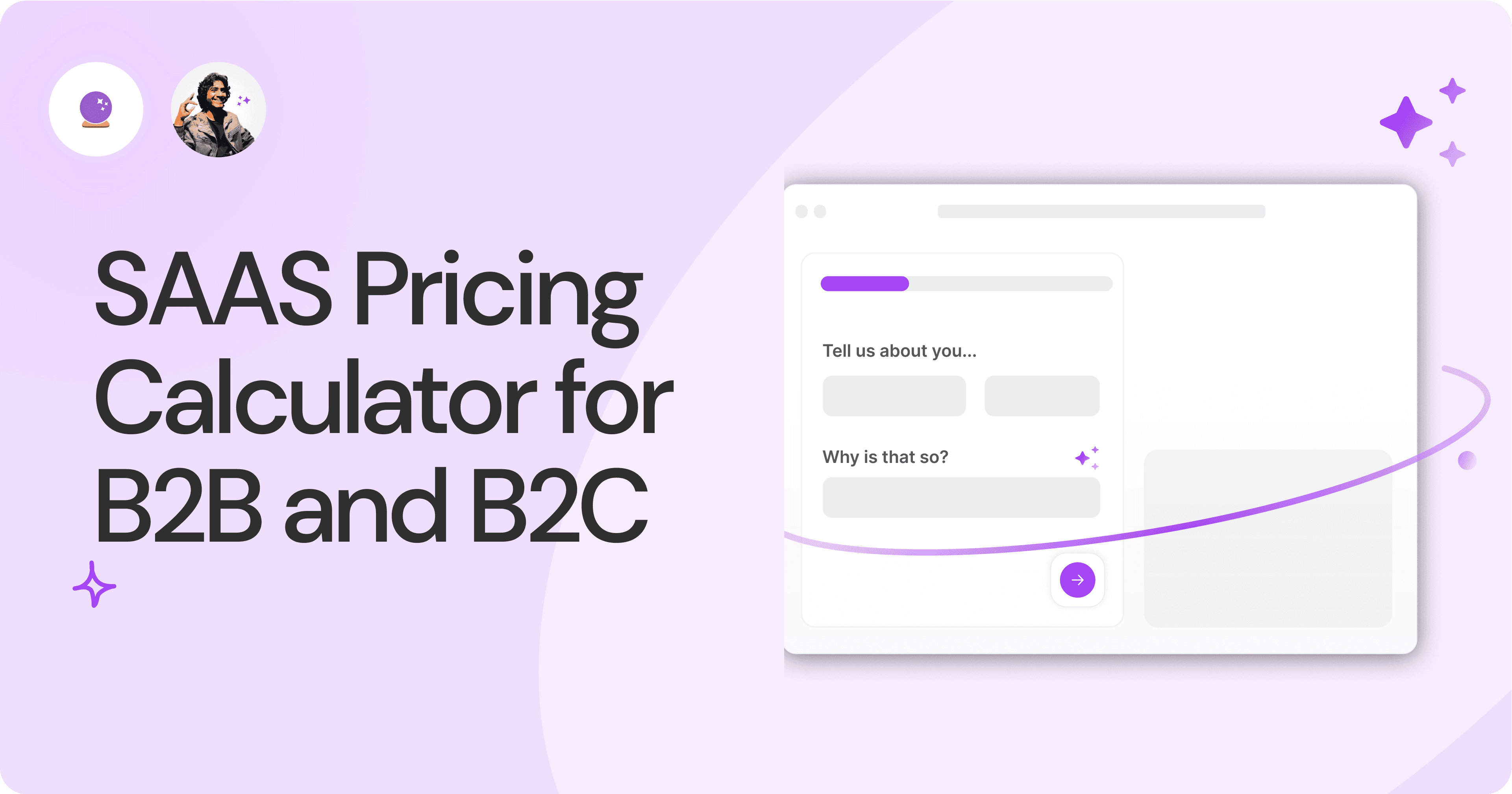
SAAS Pricing Calculators: B2B v B2C Online Forms.
The SaaS pricing calculator is an essential tool for both B2B and B2C SaaS companies. But how do you build it, right? We have you covered.
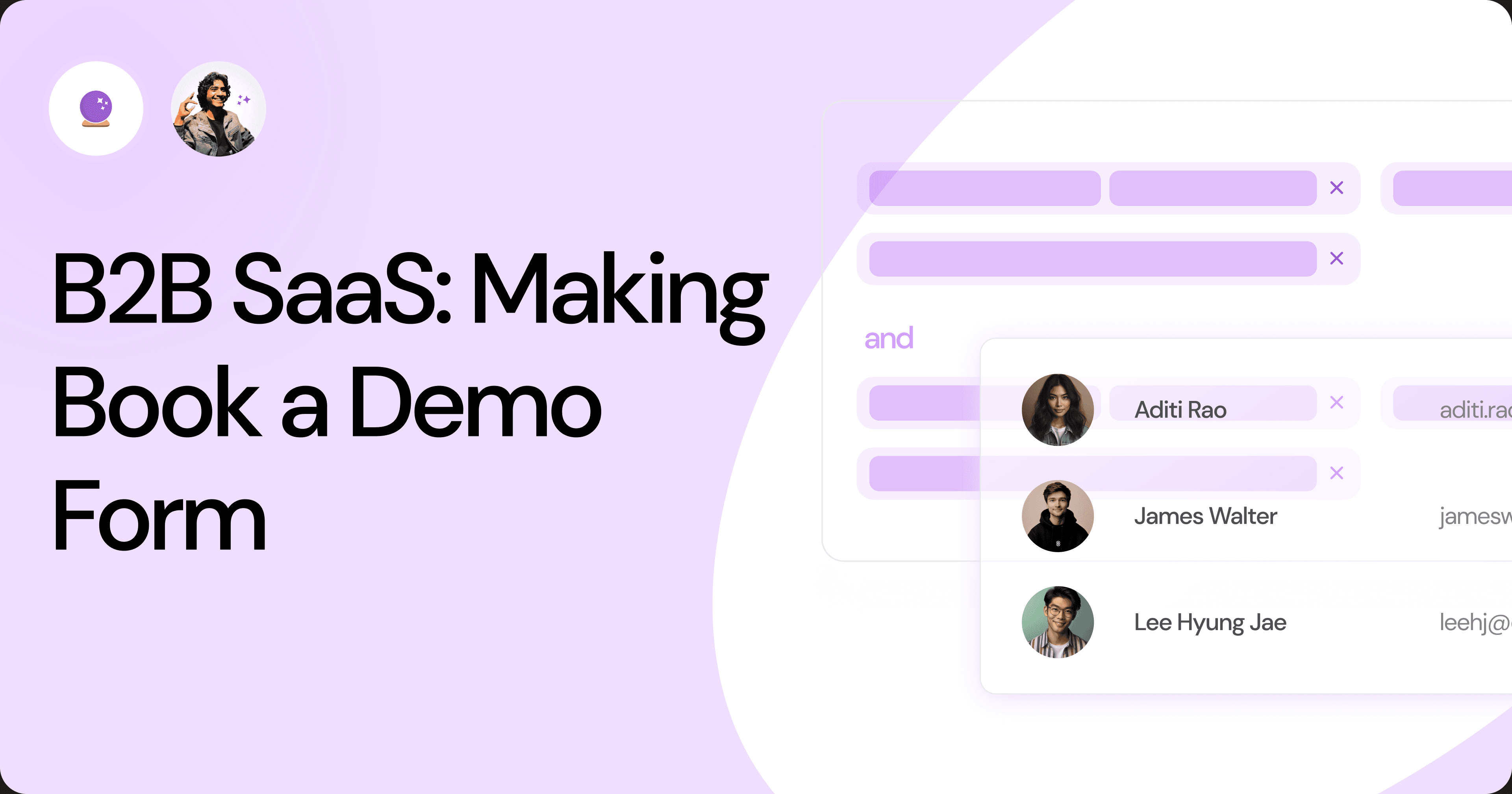
B2B SaaS: Making Book a Demo Form.
Having the perfect book a demo form for B2B SaaS is the first step in capturing leads. There are a few fundamental techniques to get this form right. Read on.

How to Get Started With SaaS Onboarding.
SaaS onboarding is essential for customer onboarding in B2B and B2C SaaS. Let’s understand its fundamentals, including the metrics.
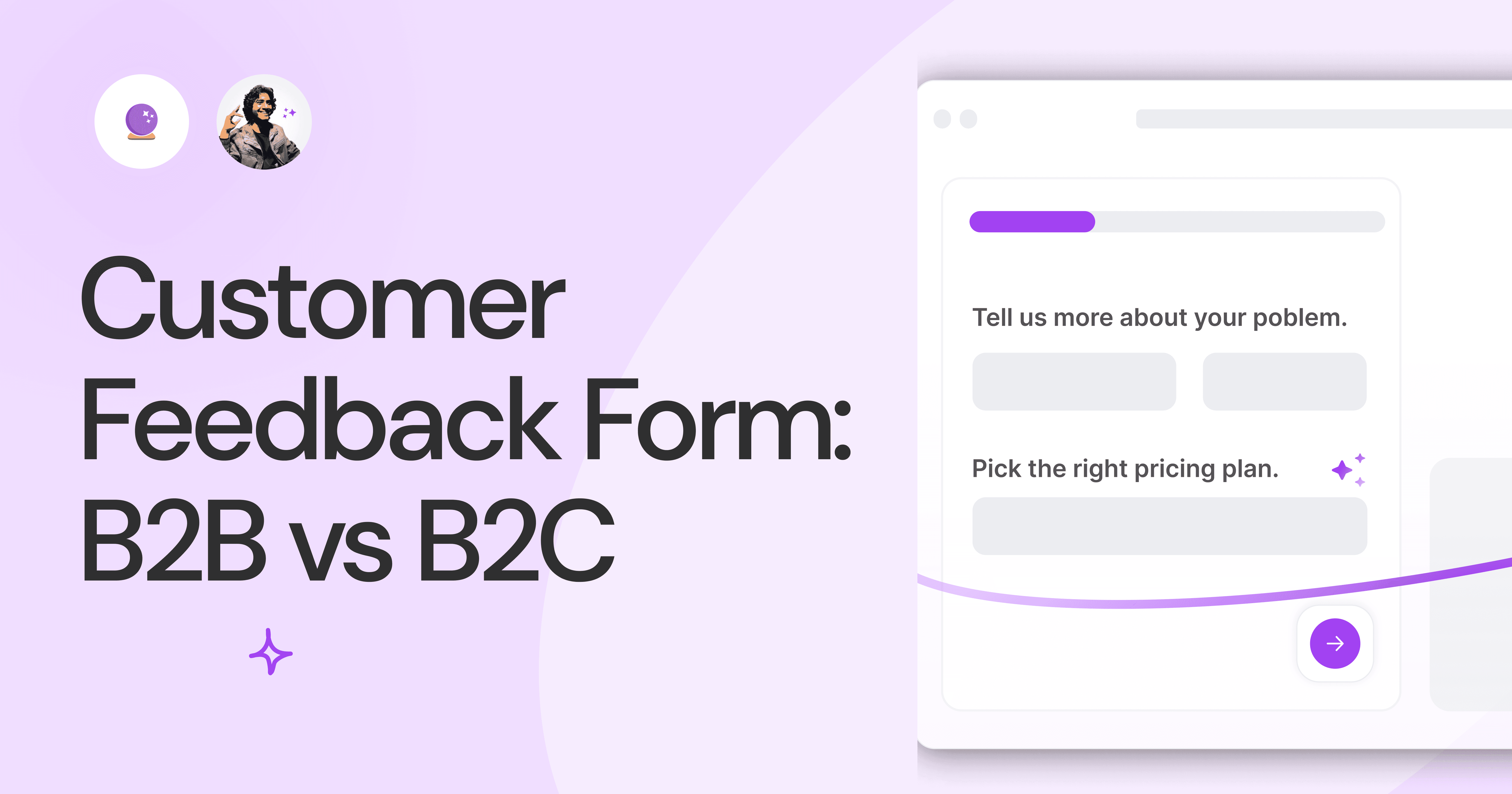
Customer Feedback Form: B2B vs B2C.
Why is customer feedback important? Because it dictates progress on B2B and B2B products and services for the customer to meet their goals.
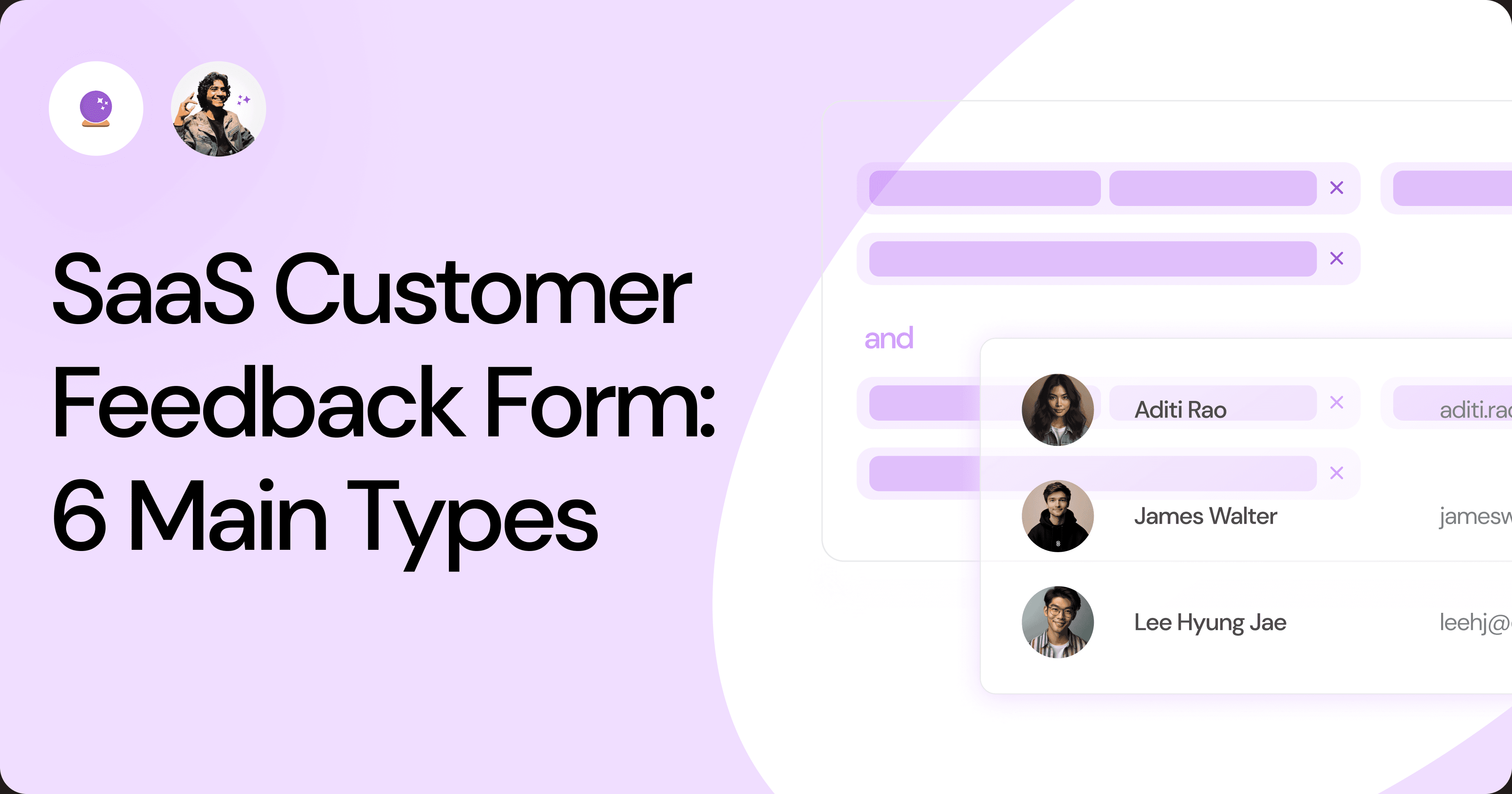
SaaS Customer Feedback Form: 6 Main Types.
As much as SaaS is self-serve, the role of a customer feedback form is highly relevant. There are different types, each with its use case and sections.
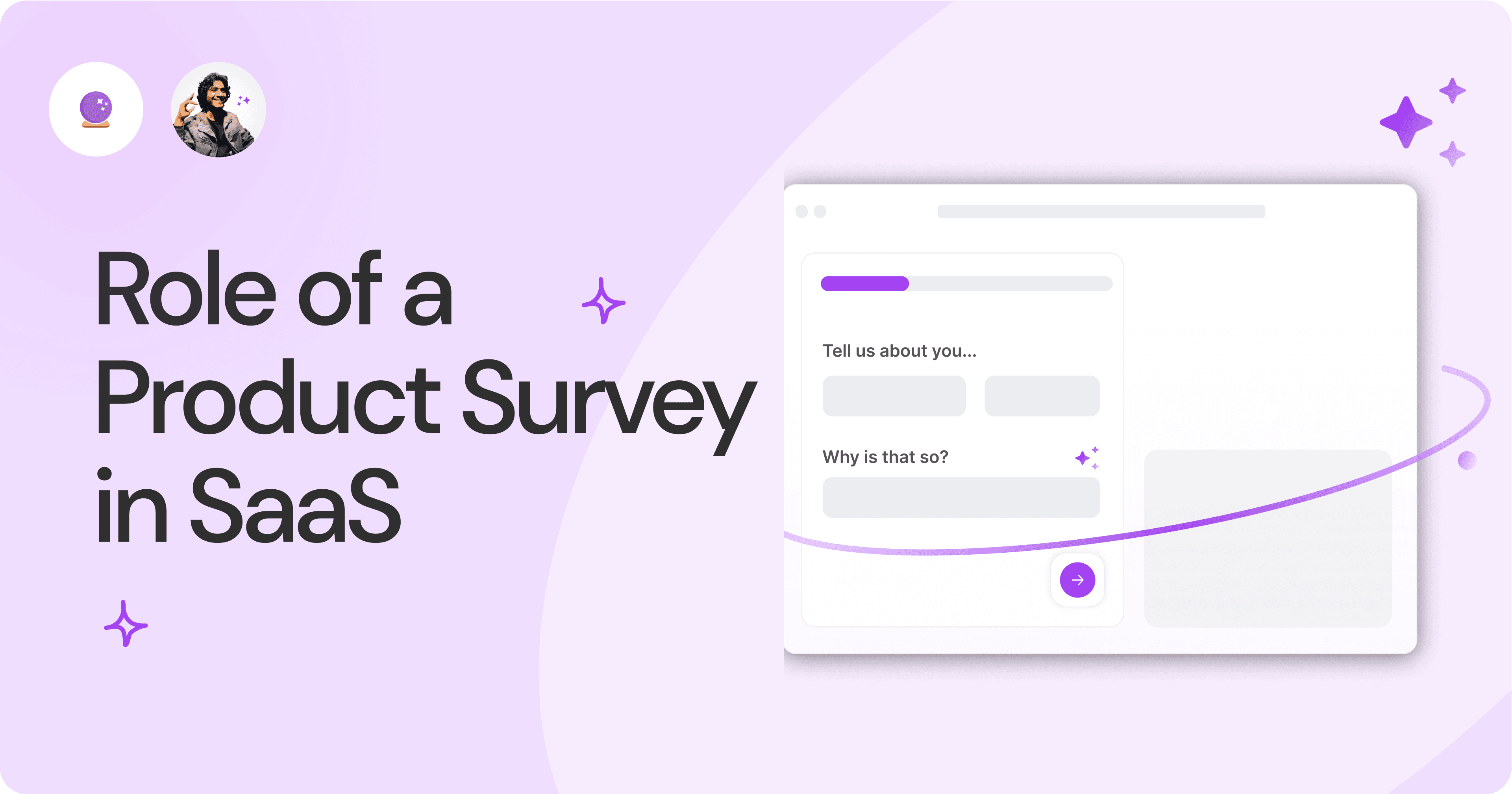
Role of a Product Survey in SaaS.
SaaS is all about creating products for specific use cases. This is where a product survey becomes all the more important to know the user deeply.
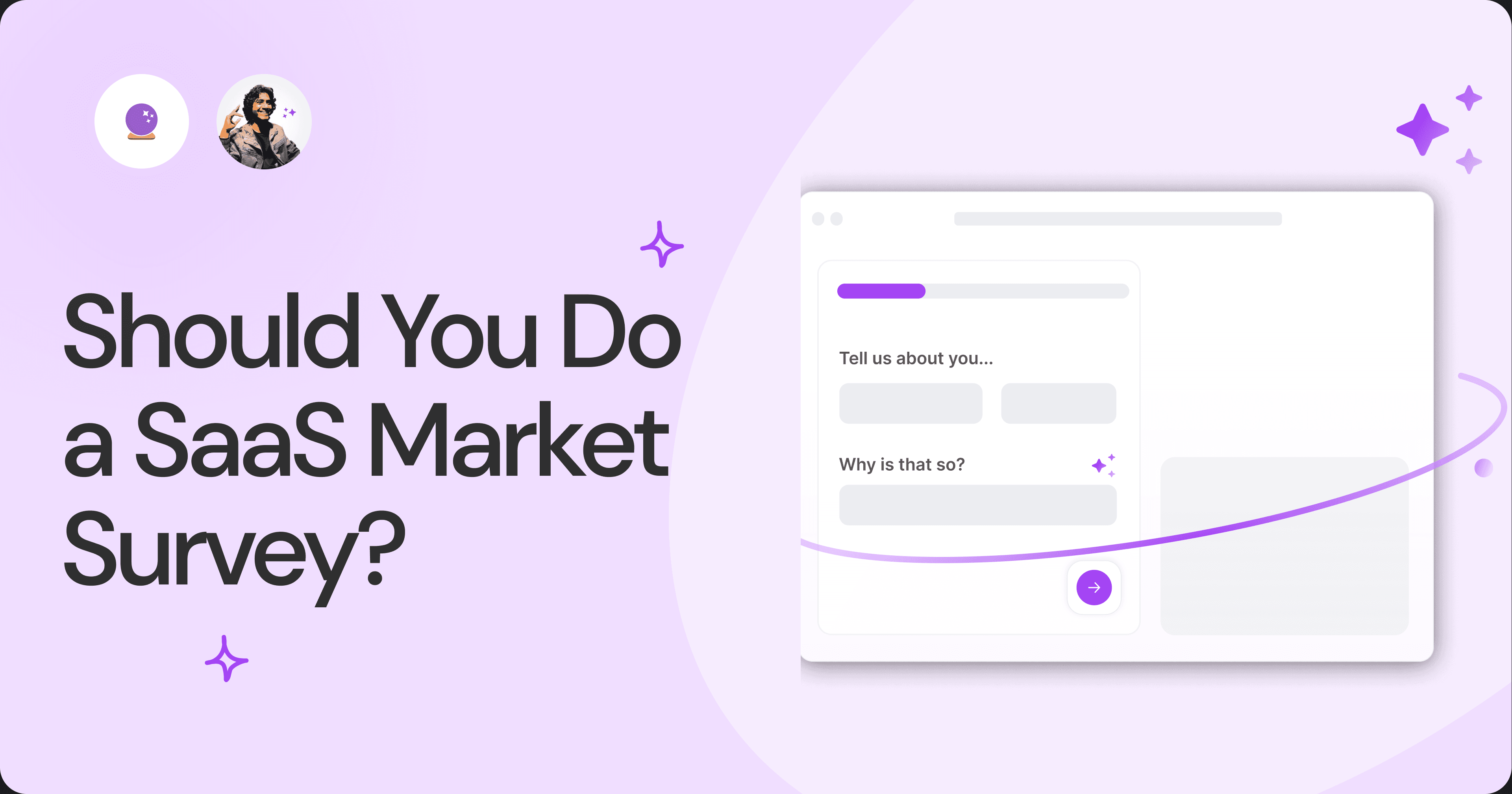
Should You Do a SaaS Market Survey?
Every SaaS company wants to grow fast. But without a market survey, growth isn't possible or sustainable. Let’s see how to do a market survey.

SAAS Pricing Calculators: B2B v B2C Online Forms.
The SaaS pricing calculator is an essential tool for both B2B and B2C SaaS companies. But how do you build it, right? We have you covered.

B2B SaaS: Making Book a Demo Form.
Having the perfect book a demo form for B2B SaaS is the first step in capturing leads. There are a few fundamental techniques to get this form right. Read on.

How to Get Started With SaaS Onboarding.
SaaS onboarding is essential for customer onboarding in B2B and B2C SaaS. Let’s understand its fundamentals, including the metrics.

Customer Feedback Form: B2B vs B2C.
Why is customer feedback important? Because it dictates progress on B2B and B2B products and services for the customer to meet their goals.

SaaS Customer Feedback Form: 6 Main Types.
As much as SaaS is self-serve, the role of a customer feedback form is highly relevant. There are different types, each with its use case and sections.

Role of a Product Survey in SaaS.
SaaS is all about creating products for specific use cases. This is where a product survey becomes all the more important to know the user deeply.

Should You Do a SaaS Market Survey?
Every SaaS company wants to grow fast. But without a market survey, growth isn't possible or sustainable. Let’s see how to do a market survey.

SAAS Pricing Calculators: B2B v B2C Online Forms.
The SaaS pricing calculator is an essential tool for both B2B and B2C SaaS companies. But how do you build it, right? We have you covered.

B2B SaaS: Making Book a Demo Form.
Having the perfect book a demo form for B2B SaaS is the first step in capturing leads. There are a few fundamental techniques to get this form right. Read on.

How to Get Started With SaaS Onboarding.
SaaS onboarding is essential for customer onboarding in B2B and B2C SaaS. Let’s understand its fundamentals, including the metrics.

Customer Feedback Form: B2B vs B2C.
Why is customer feedback important? Because it dictates progress on B2B and B2B products and services for the customer to meet their goals.

SaaS Customer Feedback Form: 6 Main Types.
As much as SaaS is self-serve, the role of a customer feedback form is highly relevant. There are different types, each with its use case and sections.

Role of a Product Survey in SaaS.
SaaS is all about creating products for specific use cases. This is where a product survey becomes all the more important to know the user deeply.

Should You Do a SaaS Market Survey?
Every SaaS company wants to grow fast. But without a market survey, growth isn't possible or sustainable. Let’s see how to do a market survey.

Nine Types of Healthcare and Medical Forms.
Medical forms are a must-have for any healthcare business or practitioner. Learn about the different kinds of medical and healthcare forms.

4 Tips for Better Medical History Forms.
Medical history forms are central to patient care, onboarding, and medical administration records. Learn how to make them easier to fill.

How to Build Mental Health Intake Forms?
Mental health intake forms are not like patient intake forms. Mental health intake forms deal with far more sensitive data and have specific design methods.

What, Why and How of Telemedicine Forms.
Telemedicine is on the rise and with different form builders out there, which one best suits your needs as a healthcare services provider?

3 Reasons for Major Drop-Offs in Medical Forms.
No matter which healthcare form we pick, there are major drop-off reasons. We shall dive into the top 3 and learn how to resolve them in your next form.

Patient Onboarding Forms - From Click to Clinic.
Patient onboarding forms are the first touchpoint for patients; getting this right for higher conversion rates is a must-have. Learn how to perfect them now.

5 Key Parts of a Good Patient Satisfaction Form.
The goal of patient satisfaction surveys is to course-correct the services of a healthcare provider. Patient feedback leads to a culture of patient-centric care.

Build Quick and Easy Medical Release Forms.
Every HIPAA-compliant healthcare provider comes across medical release forms that involve details from medical history forms. Can they be shipped fast? Yes.

SAAS Pricing Calculators: B2B v B2C Online Forms.
The SaaS pricing calculator is an essential tool for both B2B and B2C SaaS companies. But how do you build it, right? We have you covered.

B2B SaaS: Making Book a Demo Form.
Having the perfect book a demo form for B2B SaaS is the first step in capturing leads. There are a few fundamental techniques to get this form right. Read on.

How to Get Started With SaaS Onboarding.
SaaS onboarding is essential for customer onboarding in B2B and B2C SaaS. Let’s understand its fundamentals, including the metrics.

Customer Feedback Form: B2B vs B2C.
Why is customer feedback important? Because it dictates progress on B2B and B2B products and services for the customer to meet their goals.

SaaS Customer Feedback Form: 6 Main Types.
As much as SaaS is self-serve, the role of a customer feedback form is highly relevant. There are different types, each with its use case and sections.

Role of a Product Survey in SaaS.
SaaS is all about creating products for specific use cases. This is where a product survey becomes all the more important to know the user deeply.

Should You Do a SaaS Market Survey?
Every SaaS company wants to grow fast. But without a market survey, growth isn't possible or sustainable. Let’s see how to do a market survey.
Subscribe to stay updated.
Subscribe to stay updated.
Subscribe to stay updated.
HC

HC

HC

HC

70+ people from across industries read our emails.
HC

HC

70+ people from across industries read our emails.
HC

HC

HC

70+ people from across industries read our emails.




Bangalore, India / San Francisco, US
WorkHack Inc. 2023
Bangalore, India
San Francisco, US
WorkHack Inc. 2023
WorkHack Inc. 2023
Bangalore, India / San Francisco, US
WorkHack Inc. 2023
Bangalore, India / San Francisco, US




